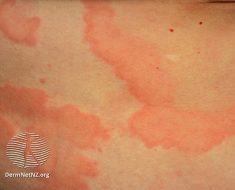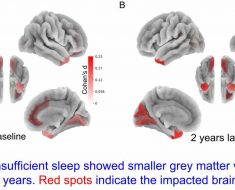
WEDNESDAY, March 6, 2019 — For patients with multiple actinic keratosis lesions on the head, 5 percent fluorouracil cream is the most effective treatment, according to a study published in the March 7 issue of the New England Journal of Medicine.
Maud H.E. Jansen, M.D., from the Maastricht University Medical Center in the Netherlands, and colleagues examined the effectiveness of four frequently used field-directed treatments for 624 patients with a clinical diagnosis of five or more actinic keratosis lesions on the head involving one continuous area of 25 to 100 cm². Participants were randomly assigned to treatment with 5 percent fluorouracil cream, 5 percent imiquimod cream, methyl aminolevulinate photodynamic therapy (MAL-PDT), or 0.015 percent ingenol mebutate gel.
The researchers found that the cumulative probability of remaining free from treatment failure was significantly higher among patients who received fluorouracil than among those who received imiquimod, MAL-PDT, or ingenol mebutate (74.7 versus 53.9, 37.7, and 28.9 percent, respectively) at 12 months after the end of treatment. The hazard ratios for treatment failure were 2.03, 2.73, and 3.33 for imiquimod, MAL-PDT, and ingenol mebutate, respectively, compared with fluorouracil.
“Our results could affect treatment choices in both dermatology and primary care,” the authors write. “From a cost perspective, fluorouracil is also the most attractive option. It is expected that a substantial cost reduction could be achieved with more uniformity in care and the choice for effective therapy.”
Several authors disclosed financial ties to pharmaceutical companies.
Abstract/Full Text (subscription or payment may be required)

Posted: March 2019
Source: Read Full Article





